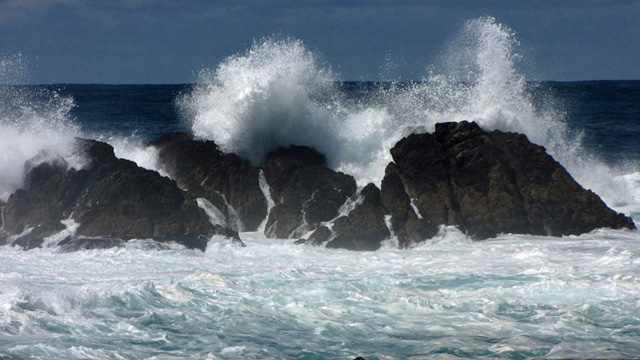
This week we’ve been hearing warnings of so-called “sneaker waves” along the coast, which have been known to sweep people and their pets out to sea without warning. These waves are especially sneaky because they can often occur when the weather is perfectly nice.
“We don’t see a lot of weather during these events,” says Larry Smith, a meteorologist at the National Weather Service in Monterey. “And that kind of feeds into the ‘sneaker wave’ thing.”
But the presence of sneaker waves means that the weather is bad somewhere. These sneakers are the remnants of Typhoon Wipha, which shredded its way along the coast of Japan last week, before heading toward the Aleutian Islands. We’re catching them at the end of a 2,000-mile journey, across what scientists call the “fetch zone.”
“The winds within that fetch zone were between 50 and 60 knots, I believe,” Smith explains. (That translates to winds speeds of 57 to 69 miles an hour.) “So those winds over those waves continually build the ocean up.”
But while size matters, a sneaker’s danger is compounded by the speed it’s moving when it hits the shore.